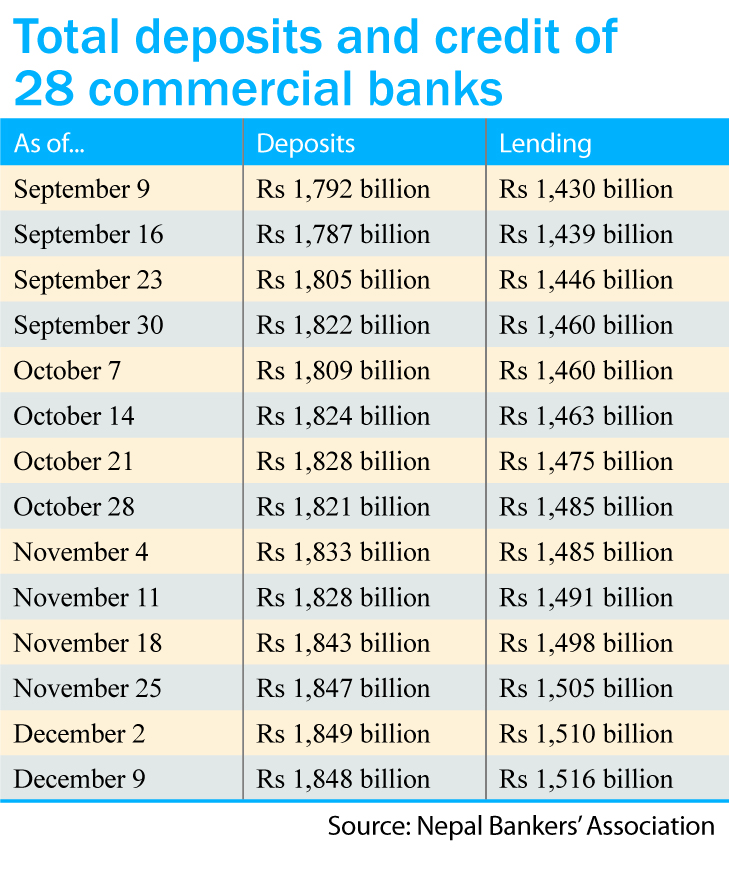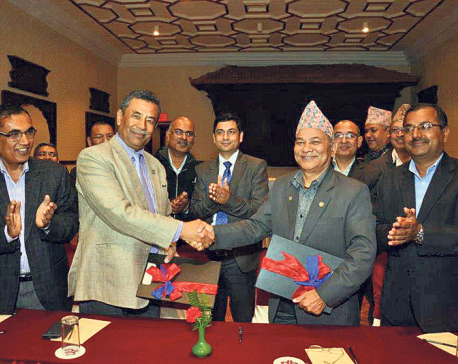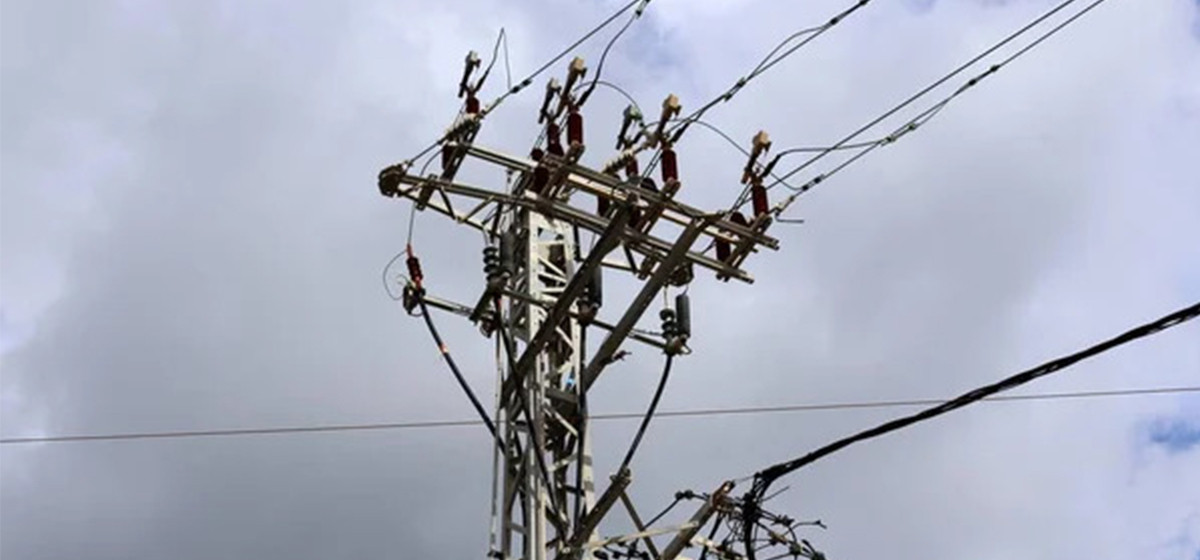
OR
Bank credit growth rises, deposits fall
Published On: December 19, 2016 03:50 AM NPT By: Republica | @RepublicaNepal

KATMANDU, Dec 19: Deposit mobilization by commercial banks is falling in recent weeks, while loan disbursement is increasing.
Growth in loan disbursements marks the end of nearly three-year-long liquidity surplus situation in the banking system when banks were struggling to increase their lending while deposits piled up.
According to Nepal Bankers' Association (NBA), 28 commercial banks added only Rs 56 billion in deposits in the last three months (as of December 9) while they floated Rs 86 billion in loans.
Banks have mobilized a total of Rs 1,848 billion in deposits and extended Rs 1,516 billion in loans.
The data shows that banks have been adding an average of Rs 4.5 billion in deposits every week, while their loan disbursements stand at Rs 7 billion a week. The mismatch in deposit and loan growth is putting banks into a problem of liquidity crunch.
The healthy surge in lending amid slow deposit growth has driven up deposit rates of banks. Commercial banks are wooing corporate depositors, offering interest rate of as high as 10 percent on fixed deposits. They are offering 8 percent interest rate to general public. However, banks are yet to raise their lending rates in line with the rise in deposit rates.
Bankers attribute the failure of the government to boost capital expenditure and fall in remittances inflow to the slowdown in deposit collection. Despite offering double-digit interest rate on deposits after three years, the deposit volume is not increasing as expected. Instead, loan disbursement is going up as economic activities are gaining momentum following last year's earthquakes and unofficial economic blockade imposed by India.
"Generally, the government's expenditure pumps money into the market which comes into the banking system. But there is a huge surplus of fund in the government account while the remittance inflow has also gone down in recent months," Upendra Poudyal, former president of NBA, told Republica.
With deposit mobilization slowing, banks are also facing difficulties in maintaining their credit to deposit (CD) ratio. Banks are required to maintain a CD ratio of 80:20, meaning that they cannot extend more than Rs 80 in loans if they collect Rs 100 rupees in deposits. As many banks are seeing the CD ratio reach the upper limit, they are having hard time in finding funds to lend borrowers. As many traders and business firms will be filing taxes on the eve of the second quarter of the current fiscal year, the deposit base is likely to fall further in the coming weeks.
You May Like This

Bank deposits witness tepid growth
KATHMANDU, March 30: While banks have heaved a sigh of relief after the regulation issued the Nepal Rastra Bank (NRB) allowed... Read More...

Mega Bank, Tourism Dev Bank sign MoU for merger
KATHMANDU, Jan 25 : Mega Bank Nepal Ltd (MBNL) and Tourism Development Bank Ltd (TDBL) have signed a Memorandum of Understanding... Read More...

Janata Bank, Tribeni Bikas Bank sign merger pact
KATHMANDU, Nov 8: Janata Bank Nepal Ltd and Triveni Bikas Bank Ltd have signed a memorandum of understanding (MoU) for... Read More...









Just In
- Man found dead in Dhanusha
- Gold prices decreases by Rs 400 per tola
- Ilam-2 by-election: UML candidate Nembang secures over 11,000 votes
- High-voltage power supply causes damage to 60 houses
- Bajhang-1 by election: UML leads again
- Lumbini and Koshi likely to experience stormy conditions
- Bajhang-1 by-election: NC maintains narrow lead over UML
- CIB continues investigation into illegal driving license issuance case








Leave A Comment